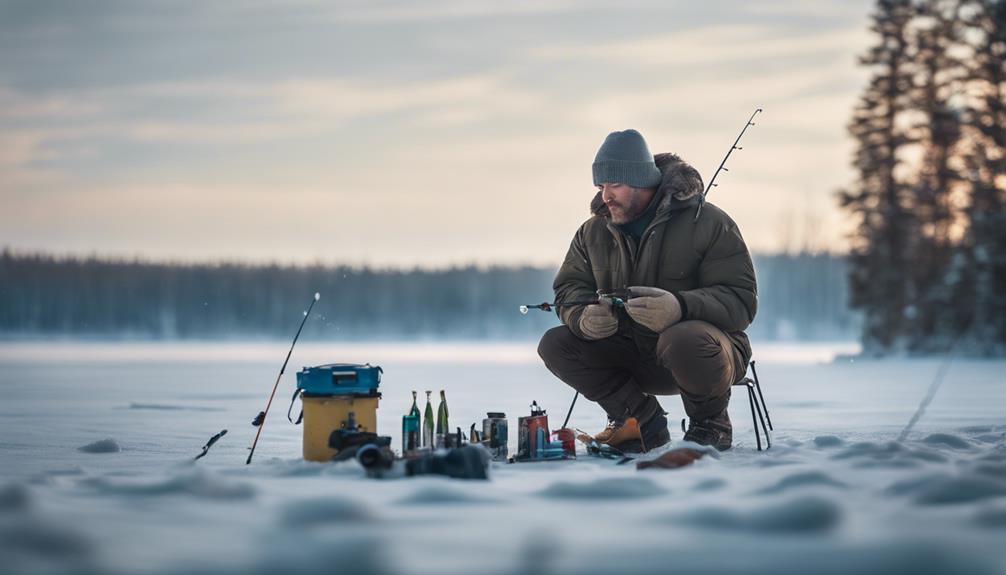Understanding Fly Fishing Techniques: An Introduction
Fly fishing is more than just a hobby; it’s a passion that connects enthusiasts with nature. The art of fly fishing involves using artificial flies as bait, a technique that requires skill, patience, and a deep understanding of aquatic ecosystems. This guide will delve into various fly fishing techniques that can enhance your experience on the water, whether you’re a novice or a seasoned angler. By mastering these techniques, you can improve your chances of landing that trophy fish while enjoying the tranquility of nature.
The Basics of Fly Fishing Techniques
Before diving into advanced fly fishing techniques, it’s essential to grasp the fundamentals. Fly fishing requires the right gear, which typically includes a fly rod, a fly reel, and a selection of flies designed to mimic insects or other food sources. Understanding the mechanics of casting is crucial; the two primary styles are the overhead cast and the roll cast. The overhead cast is great for longer distances, while the roll cast is useful in tight spaces. Mastering these basic casting techniques is the first step toward successful fly fishing.
Choosing the Right Fly: Key to Effective Fly Fishing Techniques
Selecting the appropriate fly is one of the most critical fly fishing techniques. The type of fly you choose should depend on the fish species you’re targeting, the time of year, and the local insect hatches. Dry flies float on the water’s surface and are ideal for catching fish that feed on insects. Nymphs, which mimic underwater larvae, are effective for fish that feed below the surface. Streamers imitate larger prey, such as minnows or leeches, and can attract predatory fish. Understanding the behavior of your target fish and matching the hatch is vital for success.
Reading the Water: A Crucial Skill in Fly Fishing Techniques
One of the most overlooked fly fishing techniques is the ability to read the water. An experienced angler can identify where fish are likely to be located based on the water’s current, structure, and temperature. Look for areas with cover, such as fallen trees, rocks, or submerged vegetation, as these provide shelter for fish. Additionally, observe the flow of the water; fish often hold in slower currents adjacent to faster-moving water. By learning to read the water effectively, you can dramatically increase your chances of making a successful catch.
Mastering Casting Techniques for Fly Fishing
Casting is the heart of fly fishing techniques, and mastering various casting methods can significantly improve your effectiveness on the water. The double haul cast is a popular technique for gaining distance and accuracy. It involves using both hands to pull the line while casting, allowing for greater control and power. The sidearm cast is useful for casting under overhanging branches, while the parachute cast can help present your fly delicately on the water’s surface. Practicing these casting techniques will enhance your skills and adaptability in different fishing scenarios.
Understanding Fish Behavior: A Game Changer in Fly Fishing Techniques
An essential aspect of honing your fly fishing techniques is understanding fish behavior. Fish are influenced by factors such as water temperature, time of day, and weather conditions. For instance, many species are more active during the early morning or late evening. Additionally, understanding seasonal patterns can help you determine the best times for fishing specific locations. By observing fish behavior and adapting your techniques accordingly, you’ll be more equipped to successfully target and catch fish.
Strategizing Your Approach: Advanced Fly Fishing Techniques
Once you’re comfortable with the basics, it’s time to explore advanced fly fishing techniques that can elevate your game. Techniques such as Euro nymphing involve using a long rod and a lightweight leader to detect subtle strikes while nymph fishing. This method is highly effective in fast-moving water. Additionally, understanding the importance of presentation is crucial; the way you present your fly can make a significant difference. Techniques like the “dead drift” and “swing” can help in presenting your fly in a natural manner, increasing your chances of enticing a fish to strike.
Conclusion: Embracing the Art of Fly Fishing Techniques
In conclusion, fly fishing techniques encompass a wide array of skills and knowledge that every angler should strive to master. From understanding the gear and selecting the right flies to reading water and strategizing your approach, each element plays a vital role in your success. As you continue to practice and refine your techniques, remember that patience and persistence are key. Fly fishing is not just about the catch; it’s about enjoying the journey and immersing yourself in the beauty of nature. With this comprehensive guide, you are well-equipped to embrace the art of fly fishing and create lasting memories on the water.
By implementing these fly fishing techniques, you can significantly improve your skills and experience greater success on your fishing adventures. Happy fishing!
